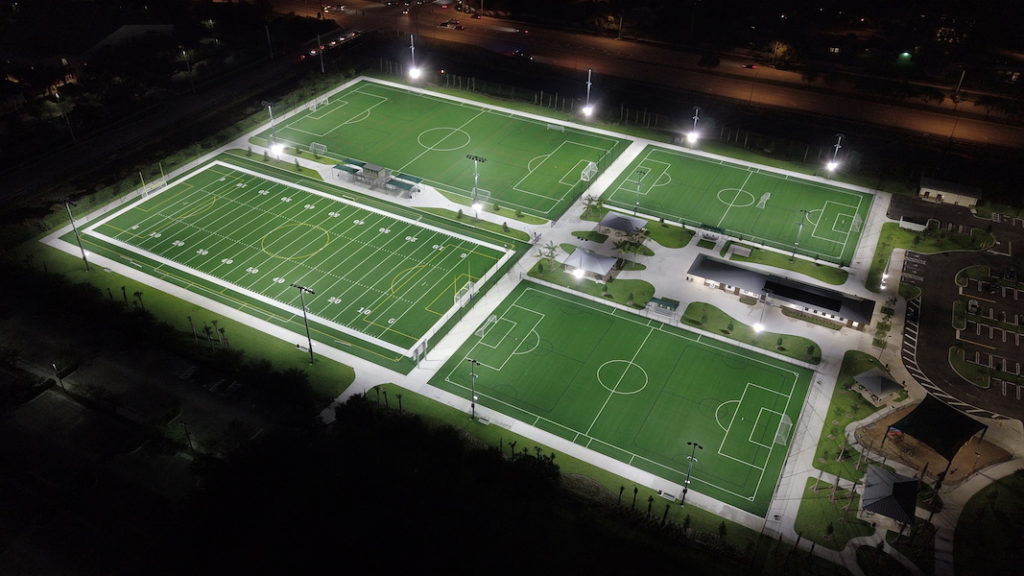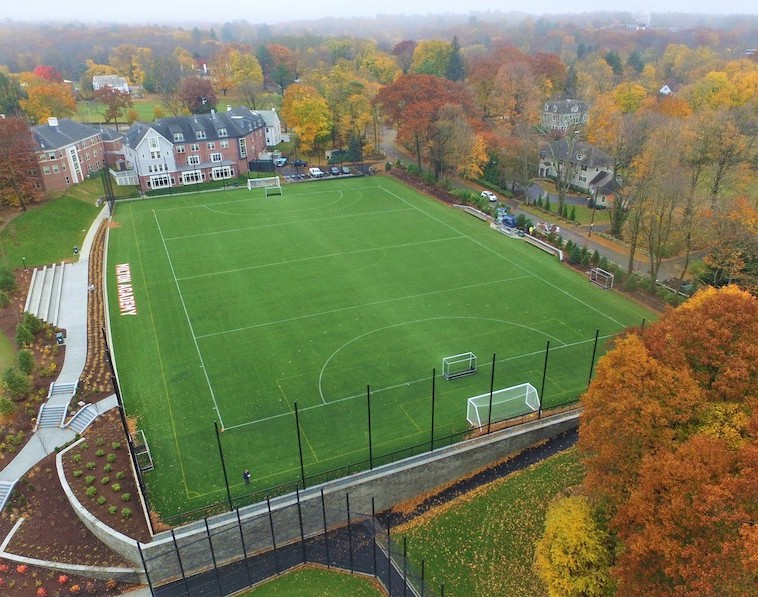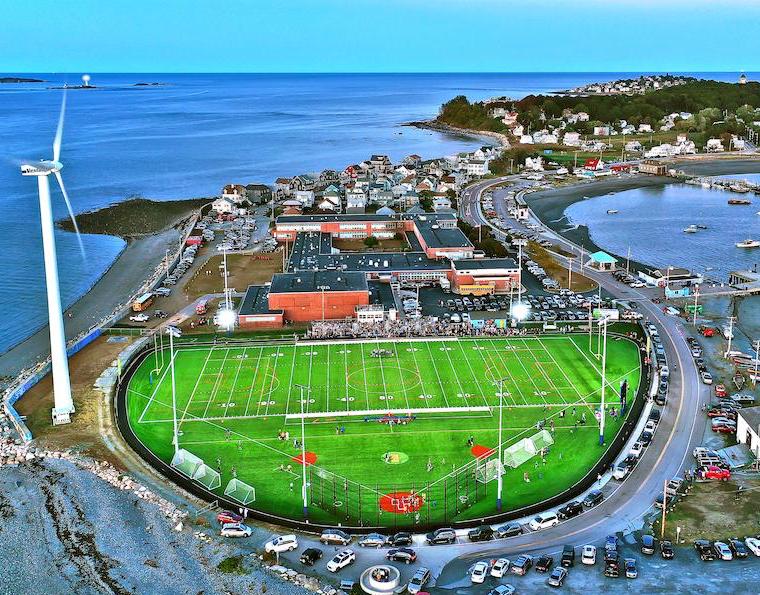By Mary Helen Sprecher
While the year we’ve just said goodbye to (with no great regrets) has been all about safety, it’s time to look to the future. Sports are returning to fields, spectators are returning to the stands, and field owners and managers are returning to their responsibilities.
But safety remains important. And while there are certainly plenty of health protocols that will be essential in the months to come, it is imperative not to lose sight of safety on the field itself. In particular, it is essential to control physical risks to players.
According to the American Sports Builders Association (ASBA), for designers, builders and suppliers of materials for athletic facilities, observing important safety requirements is going to be as important this year as any. Many teams are returning to the field for the first time in more than a year, and unfortunately, fields may have been neglected in the interim.
John Schedler, CFB, CTB, an athletic facility consultant with Bakara Sport, noted that the first consideration should be the surface of the field itself. For synthetic fields, regular maintenance protocols should be observed, such as field grooming and decompaction of the infill.
“The owner should look at the small things and details like on baseball and softball fields, including the high-wear areas that often need spot maintenance after each event or at least on a regular basis so that the infill doesn’t migrate out of the area and lead to irreparable turf damage,” he said.

Surface testing can help verify they are having the desired effect.
“It is essential to have proper maintenance and regular testing of the field surface itself,” said Schedler. “Gmax or HIC testing for player safety, as well as owner due diligence should include attention to force reduction, vertical deformation, rotational resistance, ball roll etc.” These, he added, are already required by FIFA but are applicable to field performance in general.
Lee Narozanick, CTB, CFB, of American Athletic Courts, Inc. and Florida Turf and Track, said that grass fields merit attention as well.
“Both synthetic and natural fields need to be inspected daily before each event. Different types of fields will require different attention,” said Narozanick.
In addition to ascertaining the field surface is acceptable for play, field managers should turn their attention to the structures on the field itself. In high-wind areas, fastening down moveable objects such as goal nets or other objects can enhance area safety.

But just as important are the design considerations.
“One of the most common safety issues I see is in the ‘runout’ areas for fields,” said Todd Smith, PhD, PE, LEED AP, CFB, of R&R Engineers-Surveyors, Inc. “While the industry has improved its knowledge and design around the minimum areas outside the play field’s formal end or sidelines, there seems to now be an increase in surface type changes just outside these perimeter game lines. It appears most ‘runout’ or safety zones are defined or believe to be defined as no vertical obstructions like walls, carts, poles, team benches, tables, etc. This is true, but we’re seeing too many changes of surface like an electrical box, irrigation box, wood timbers, or metal cap for sleeves. These are extremely dangerous for athletes running out of bounds and trying to slow down or stop. Their shoes or cleats slip or get caught in the changed materials and cause injuries.”
The fact that many sports fields are encircled by running tracks has contributed to an additional risk, he added.
“Not as prevalent in our experience, but just as important are how close the soccer corner kicks have become to a running track. In the attempt to make the soccer field as wide as possible, the corner kicks are pushed right up to the running track edge,” said Smith. “In some cases, the corner kick approach is all on the running track and the last foot-plant for kicking is suddenly on turf instead of the track surface, or worse…on the concrete or metal-grated slot drain on the inside of the track.”
Unfortunately, there is no one easy answer, Smith added.
“Solving these issues is obviously a facility-specific question. There are many options, like making a soccer field a little shorter – like 330 feet – so you can keep the width but pull the corner kick away from the track a few feet, moving irrigation or other boxes a few more feet away from the field edge, or providing reasonable turf caps on these other materials.”
While attention is often paid to the fencing around a baseball or softball field, with soft capping added to the fence tops so that fielders can safely attempt more challenging plays, other structures may not get the same attention.
“Fields in the middle of running tracks require padding on field events if field events are too close,” Narozanick cautioned.
Because many athletes are trying to make up for lost time, and, particularly at the high school level when attempting to create a lasting impression for potential college coaches, it is likely they will be attempting more aggressive plays and trying to get as much field time as possible.
According to Schedler, it is incumbent upon field managers to consider any immovable object that might pose a potential risk to a player, and try to lower the problem factor. Proper padding on goals, posts, fences and any other structure is necessary.
Something many field builders have noted is the need to keep back parents and spectators, who often want to be on the sidelines. Unfortunately, the sidelines are an overrun area and unprepared spectators could cause injury to players who are chasing a ball and not looking.
“Something that is really helpful is having a security crew that can monitor where people are going in order to keep them in the safety zones,” said Narozanick.
Ascertain in advance who has permission to be on the sidelines. This might include the following:
• Athletes
• Coaches, trainers and authorized team personnel
• Spirit squads or dance teams
• Official media representatives with cameras (this does not include parents with smartphones and iPads or those claiming to be scouts for colleges – make sure official credentials are provided)
• Security personnel
If the band is scheduled to perform, members should only take the field or be on the sidelines during times when there is no active play, such as halftime. Coaches and band directors should discuss in advance what types of performances are planned and when they should take place, as well as where band members should be when they are not performing.
Make sure a list is provided. Have signage plainly stating that no unauthorized persons are permitted beyond the bleachers and that unauthorized trespassers will be removed from the game.
ASBA offers comprehensive publications containing design and construction guidelines to help field owners and managers; these include Sports Fields: A Construction and Maintenance Manual and Running Tracks: A Construction and Maintenance Manual. In addition, ASBA offers a free “Design Showcase” app, available in the App Store, with layouts for fields and courts.
Mary Helen Sprecher wrote this article on behalf of the American Sports Builders Association (ASBA).
Available at no charge is a listing of all publications offered by ASBA, as well as ASBA’s membership directory. For information on ASBA, as well as on its publications, activities and upcoming meetings, contact ASBA at 2331 Rock Spring Road, Forest Hill, MD 21050. The toll-free phone number is 866-501-ASBA. The ASBA also may be reached electronically via its website, www.sportsbuilders.org, or via e-mail at info@sportsbuilders.org.


